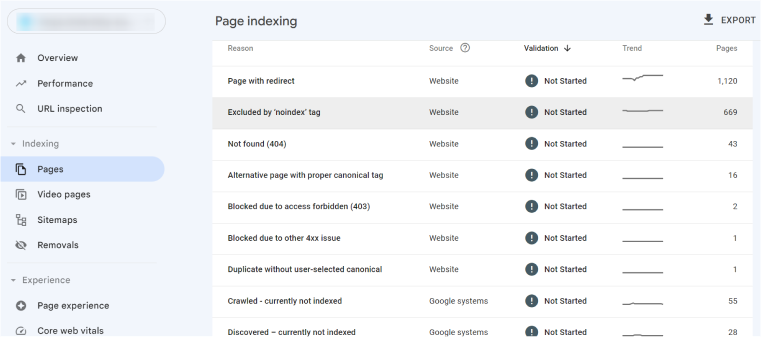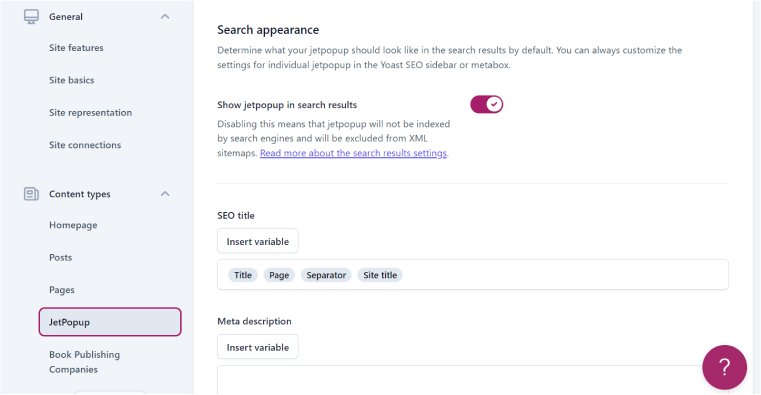In the world of WordPress and Website positioning, some internet pages need to not appear on a lookup end result web page, and some even must be fully hidden from research engines. Noindex and Disallow are two very important tools for accomplishing it.
Noindex controls no matter whether specified internet pages appear in look for, although Disallow tells which components of your internet site research engines can test out.
In this report, we’ll break down these ideas, exhibiting you when and how to use them in WordPress.
Desk of Contents
Which Website Sections to Cover and Why?
Some internet pages, posts, or directories are not intended to be “seen” by look for engines, and there are two primary good reasons for this:
- safety
- Search engine marketing.
It’s less complicated with the first stage (security) because it is noticeable that the Login page and procedure or private pages are not meant to be indexed. For most circumstances, the Disallow directive really should be used listed here.
The other cause – Web optimization – is broader, and the Noindex directive is practical in most instances. So, let us dive further into this topic.
Some internet pages are not intended to surface in a research outcome page, for illustration, tag or archive webpages, specially if you now have web pages with a selection of posts intended the suitable way. Let’s say you show posts applying JetEngine’s Listing Grid and definitely do not will need to replicate this written content in the archive site, which also may perhaps glance really ugly, so users far better never ever uncover it. In addition, many Search engine marketing experts take into consideration that any archives ought to be hidden, even if they are effectively-created and displayed to users, but they may well bring about information duplication.
The exact same goes for the author’s archives, which are established automatically by WordPress.
Another scenario is web pages or templates produced by many plugins that increase their possess auxiliary CPTs. For instance, galleries or other sections that are inserted into web pages employing shortcodes, mega menus, JetEngine Listing Goods, JetWooBuilder templates, Concept components, and so forth.
You can discover aspects that really should be noindexed by working with Google Search Console, checking a sitemap, or just manually environment Noindex to particular web pages or directories if you understand that they need to not show up in SERP.
After setting a Noindex directive, internet pages may nonetheless seem in a research, so it is much better to ask for re-crawling working with the URL inspection software. Later on on, you will be equipped to see the page indexing report and debug items if essential.

Noindex vs. Disallow: What to Opt for?
There are two directives for hiding internet pages/posts/taxonomies: Disallow and Noindex.
Noindex tells research engines not to index unique URLs so they will not surface in the search final results.
Disallow instructs search engines not to crawl specific webpages/posts/taxonomies and not to have obtain to them. Having said that, it doesn’t guard this material from remaining indexed if it can be accessed by means of other implies, these as external back links.
One more very important function the Disallow directive performs is saving a crawling funds. Google robots have a sure restrict for crawling your web page for every working day, so closing unimportant internet site sections will help save that finances and allow it be utilized for definitely important pages.
It’s vital to use them diligently, being familiar with what you want to realize.
Observe
If you want to apply the Noindex directive to the particular web page/publish/listing, it ought to not have the Disallow directive.
Now, the issue is when to use each individual of the directives.
Disallow: Use Situations and How to Set It Up
The major function of Disallow is to control which pieces of your web page search motor crawlers can accessibility and instruct them not to verify distinct URLs. But Disallow doesn’t stop indexing if other links lead to these internet pages, as I have pointed out previously mentioned.
So, let us boil it down to the most recurrent use circumstances.
Use instances for Disallow directive:
- duplicating information
- login site and admin spots
- delicate and private information
- scripts and stylesheets
- slender articles: Thank you web site, Research web site, paginated internet pages, etcetera.
- also can be tags and archive web pages
- XML sitemaps if they have been created independently and uploaded applying Google Console
- unimportant URLs that do not increase to excellent but devote a crawling spending plan.
How to Disallow pages in WordPress
Disallow is a robots.txt directive. Which is why you ought to to start with obtain your robots.txt page or create it if it does not exist nonetheless.
💡 robots.txt is a file that retains the directives for look for engine bots (crawlers) to instruct them on which element of the internet site to crawl and which not.
To examine if the file exists, type yourdomain.com/robots.txt.
If it does not exist, you can develop it in the root listing of WordPress. It is even faster working with an Web optimization plugin. For example, in Yoast Web optimization, go to Yoast Web optimization > Instruments > File Editor.
Now, publish the directive (there can be posts/webpages or precise directories/tags):
User-agent: *
Disallow: /my-non-public-page
Disallow: /my-key-listing/
The asterisks right after “user-agent” means all crawlers. To learn much more about their sorts and how to disallow only a specific just one, look at this Google short article.
Be quite watchful not to generate just the next:
Disallow: /
It will near the complete website from indexing unless of course this is your goal.
To comment a line in the robots.txt, use the hash symbol (#).
Right here are some illustrations of beneficial Disallow directives:
Consumer-agent: *
#to disguise login webpages:
Disallow: /wp-admin/
Disallow: /wp-login.php
#to cover tag, class, and creator archives:
Disallow: /tag/
Disallow: /category/
Disallow: /author/
#to hide main and plugin files:
Disallow: /wp-consists of/
Disallow: /wp-content/plugins/Soon after writing the directives, you can see no matter whether it will work by employing the URL Inspection tool in Google Look for Console.
How to Noindex Pages, Posts, and Directories in WordPress
In contrast to the Disallow directive, Noindex is a meta tag, and it’s situated at the starting of every site (and not in robots.txt). It looks like this:
In WordPress, we cannot edit site HTML code straight, but it is uncomplicated to do utilizing Website positioning plugins. Let us see how to do it making use of Yoast Seo.
If you use JetWooBuilder, you likely really don’t want its templates to be indexed. To make it materialize, go to Crocoblock > Woo Web page Builder and open up the template you want to cover. Simply click “Edit” (not with Elementor), and you will see the Yoast panel possibly on the right or under the major material space.
Go to the Sophisticated tab, and you’ll see the label “Permit search engines to display this material in look for final results?” with a dropdown. Select “No” there and update the article.

You may also want to set the outcoming backlinks to “Noindex” – in this situation, use the next label, “Should really search engines observe links on this content?” and opt for “No.”
You can do the very same to any webpage, put up, or CPT.
To streamline the system, you can noindex specified CPTs or groups/tags in bulk, go to Yoast Search engine optimisation > Configurations, and pick out the article or taxonomy you want to disguise. Then, switch off the Present your CPT/taxonomy time period in lookup results toggle and save improvements.

If you use Rankmath, look at this extensive guide on how to noindex posts using this plugin.
You can find even extra neat options that Seo plugins give look at the Advanced and other sections in Configurations. But it’s essential to comprehend what you are accomplishing and why so the site overall look in SERP will not have challenges.
FAQ
You should really utilize the Noindex directive to it.
Use Website positioning plugins that enable you to noindex particular person web pages.
Disallow is a robots.txt directive that tells look for engine bots not to crawl specified webpages/posts/taxonomies for multiple causes: privateness, conserving crawling finances, and many others. Noindex is a meta tag directive that tells look for engines not to clearly show sure pages/posts/taxonomies in SERP.
Bottom Line
Setting the right directives for search engines is very important for the proper indexing of any web site and excellent positions in SERP. Noindex and Disallow are some of the most important of them and permit you disguise some areas of the internet site from crawlers or not demonstrate them in search effects.
While Disallow is much more about efficient research engine indexation, Noindex allows you manage what potential web site site visitors will see and how they can find your site on the Net without obtaining themselves on some auxiliary web pages that are not equipped to catch the attention of or transform them.